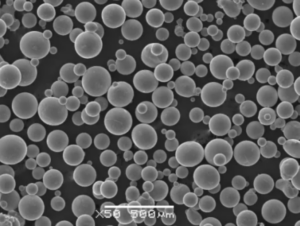Overview of GRCop-42 Alloy Powder
GRCop-42 is an alloy powder primarily made from copper, chromium, and niobium. Developed by NASA, this material has gained recognition in the aerospace industry due to its exceptional thermal conductivity, strength, and durability at high temperatures. Whether you’re an engineer, a researcher, or just a curious reader, understanding GRCop-42’s unique features will give you insight into why it’s becoming a go-to material in advanced manufacturing.
Key Features of GRCop-42 Alloy Powder:
- High-Temperature Performance: Maintains strength and thermal conductivity at temperatures up to 1,000°C.
- Resistance to Oxidation: Excellent resistance to oxidation, ensuring longevity even under extreme conditions.
- Ease of Fabrication: Suitable for various manufacturing processes, including additive manufacturing and hot isostatic pressing.
Let’s break down these points and dive deeper into what makes GRCop-42 stand out in its field.
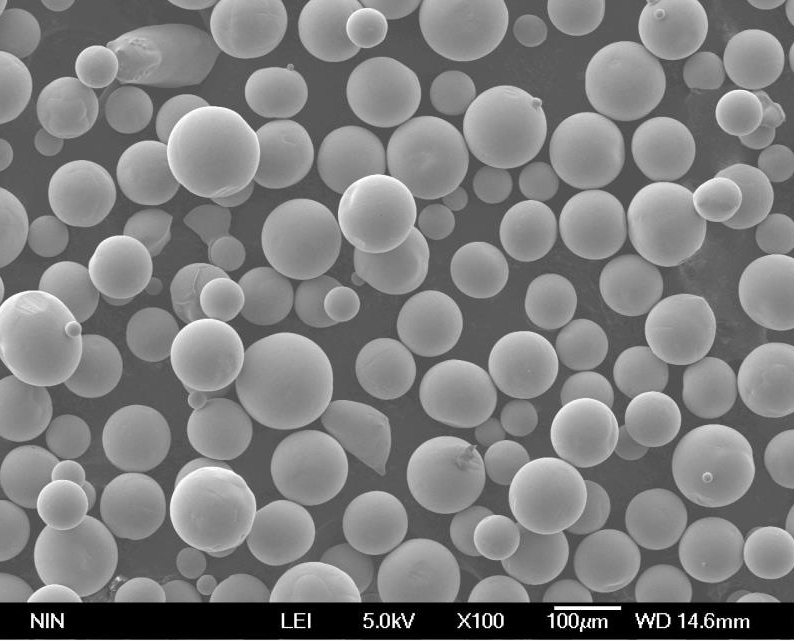
Composition of GRCop-42 Alloy Powder
The GRCop-42 alloy powder is a carefully engineered material composed of specific metals that provide it with its unique properties. Below is the detailed composition:
| Element | Composition (%) | Role in Alloy |
|---|---|---|
| Copper (Cu) | 88.8 – 89.2% | Provides high thermal conductivity and electrical properties. |
| Chromium (Cr) | 6 – 6.5% | Enhances oxidation resistance and high-temperature strength. |
| Niobium (Nb) | 3.2 – 3.5% | Contributes to the alloy’s creep resistance and microstructural stability. |
| Other Elements | 1.0% (max) | Includes impurities like Fe, Si, etc., which are kept at minimal levels to maintain purity. |
Understanding the Composition:
The combination of copper, chromium, and niobium in specific ratios is what makes GRCop-42 particularly effective in high-stress environments. Copper forms the bulk of the alloy, contributing to its excellent thermal and electrical conductivity. Chromium and niobium, though present in smaller amounts, play crucial roles in enhancing the alloy’s strength and resistance to oxidation at elevated temperatures.
Characteristics of GRCop-42 Alloy Powder
What makes GRCop-42 so special? It’s not just about the elements but how they come together to form a material with exceptional characteristics. Here’s a closer look:
| Characteristic | Description | Impact on Performance |
|---|---|---|
| Thermal Conductivity | High (above 300 W/m·K at room temperature) | Efficient heat dissipation, crucial for aerospace applications. |
| Melting Point | ~1,080°C (1,976°F) | Suitable for high-temperature applications, such as rocket nozzles. |
| Density | ~8.96 g/cm³ | Contributes to the alloy’s strength and durability without excessive weight. |
| Tensile Strength | > 350 MPa at 500°C | High mechanical strength under thermal stress. |
| Oxidation Resistance | Excellent | Ensures material longevity in oxidative environments. |
Why These Characteristics Matter:
Imagine the intense heat and pressure in a rocket engine nozzle. Materials used in such conditions must not only withstand these stresses but also maintain their integrity over time. GRCop-42 excels here, providing the necessary thermal conductivity and strength while resisting oxidation, which could otherwise lead to material degradation.
Specific Metal Powder Models of GRCop-42 Alloy
When it comes to choosing the right model of GRCop-42 alloy powder, knowing the specific variations available can be crucial. Below, we outline several specific models, each with its distinct features:
| Model | Particle Size (µm) | Key Features | Applications |
|---|---|---|---|
| GRCop-42 AM Powder | 15-45 µm | Optimized for additive manufacturing with excellent flowability. | 3D printing of high-performance aerospace components. |
| GRCop-42 Fine Grade | 10-25 µm | Superior surface finish, ideal for detailed work. | Microfabrication and precision components. |
| GRCop-42 Coarse Grade | 45-150 µm | High bulk density, suitable for larger parts. | Casting and traditional powder metallurgy processes. |
| GRCop-42 Nano Powder | < 100 nm | Enhanced surface area, improved sintering characteristics. | Advanced research and development, nanotechnology applications. |
| GRCop-42 Spherical Powder | 20-60 µm | Uniform shape for consistent layer deposition. | Powder bed fusion and laser sintering processes. |
| GRCop-42 Plasma Atomized | 15-45 µm | High purity, reduced oxide levels. | Aerospace and defense applications requiring stringent standards. |
| GRCop-42 Gas Atomized | 20-80 µm | Versatile powder, good flow properties. | General additive manufacturing, hot isostatic pressing. |
| GRCop-42 High-Flow | 15-50 µm | Optimized for high-speed 3D printing. | Rapid prototyping and high-throughput manufacturing. |
| GRCop-42 Recycled Powder | Varies | Environmentally friendly option, cost-effective. | Prototyping and less critical applications. |
| GRCop-42 Custom Blend | Customizable | Tailored particle size and distribution for specific applications. | Specialized manufacturing processes. |
Choosing the Right Model:
Selecting the correct GRCop-42 alloy powder model depends on your specific needs. For instance, if you’re involved in 3D printing, the AM Powder or Spherical Powder might be ideal due to their flow properties and particle size distribution. On the other hand, the Fine Grade or Nano Powder could be more suitable for applications requiring high precision and fine detail.
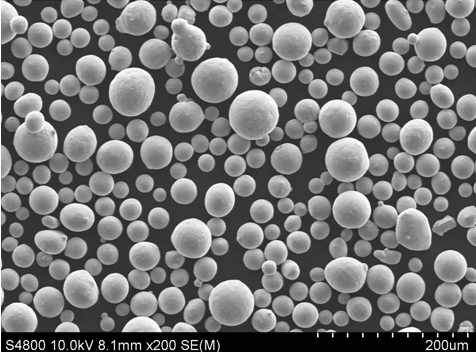
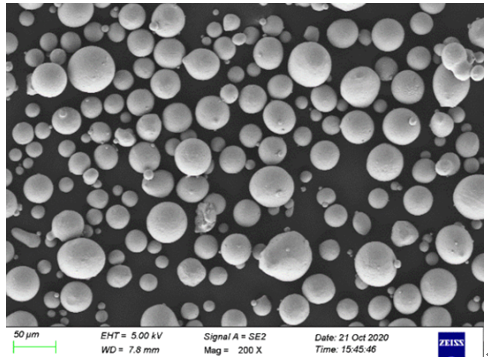
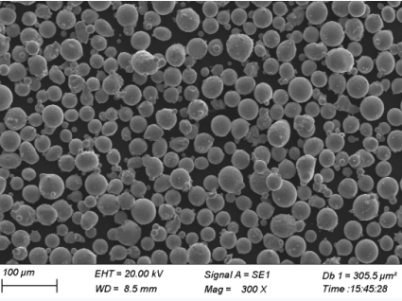
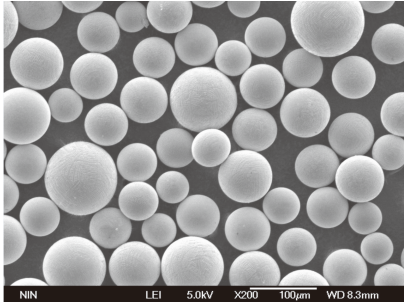

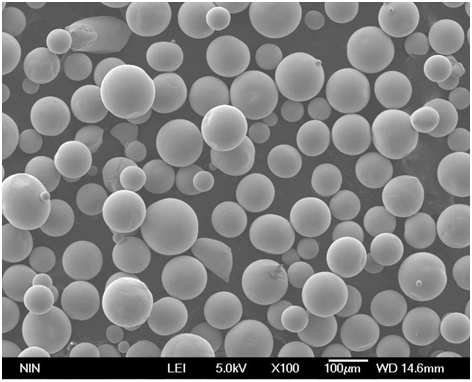
Applications of GRCop-42 Alloy Powder
GRCop-42 is not just a theoretical material; it’s a practical solution for many demanding applications. Below, we explore where GRCop-42 alloy powder is making an impact:
| Application | Description | Benefits |
|---|---|---|
| Rocket Engine Nozzles | Used in the construction of nozzles for rocket engines due to its high thermal conductivity and strength. | Ensures reliable performance under extreme heat and pressure. |
| Aerospace Components | Applied in parts like combustion chambers, heat exchangers, and turbine blades. | Provides durability and longevity in high-stress aerospace environments. |
| Additive Manufacturing | Utilized in 3D printing processes to create complex geometries with excellent precision. | Allows for the production of lightweight, high-performance components. |
| Heat Exchangers | Used in systems where efficient heat transfer is critical, such as in aircraft cooling systems. | Maximizes thermal efficiency and reduces weight. |
| Defense Applications | Employed in the manufacturing of components for military aircraft and other defense-related equipment. | Offers superior strength and resistance to environmental factors. |
| Electronics Cooling | Integrated into devices requiring effective thermal management, such as high-power electronics. | Prevents overheating, ensuring consistent device performance. |
| Automotive Industry | Used in high-performance engines and exhaust systems. | Enhances fuel efficiency and reduces emissions through better heat management. |
| Industrial Machinery | Applied in machinery that operates under high temperatures or requires robust thermal conductivity. | Increases machinery lifespan and reliability. |
| Research and Development | Utilized in experimental setups where advanced materials are being tested. | Provides a reliable benchmark for testing high-performance materials. |
| Nanotechnology | Involved in the creation of nanoscale components with enhanced material properties. | Opens up new possibilities in material science and engineering. |
Real-World Impact:
The versatility of GRCop-42 alloy powder makes it invaluable across multiple industries. Whether it’s ensuring that a rocket engine nozzle can withstand the fiery extremes of space or helping to dissipate heat in a high-performance computer, GRCop-42 is a material that delivers where it matters most.
Advantages of GRCop-42 Alloy Powder
Why is GRCop-42 so sought after? Let’s explore the major advantages that make this alloy powder a top choice for various industries:
- Superior Thermal Conductivity: Few materials can match GRCop-42 when it comes to transferring heat. This makes it ideal for applications where heat management is critical, such as in aerospace and electronics.
- Exceptional Strength at High Temperatures: GRCop-42 doesn’t just survive under high temperatures; it thrives. Its ability to maintain mechanical strength at temperatures up to 1,000°C is a game-changer in environments like rocket engines and industrial machinery.
- Resistance to Oxidation: Oxidation is a common problem in high-temperature environments, leading to material degradation. GRCop-42’s excellent oxidation resistance ensures that it maintains its integrity and performance over time.
- Versatility in Manufacturing: Whether you’re using additive manufacturing, traditional powder metallurgy, or other advanced techniques, GRCop-42 is adaptable to a variety of fabrication processes, making it a versatile material for engineers and manufacturers.
- Longevity and Durability: Components made from GRCop-42 tend to last longer, reducing the need for frequent replacements and maintenance. This translates to cost savings and improved efficiency in the long run.
When GRCop-42 Outshines the Competition:
Compared to other materials, GRCop-42 is often the better choice in scenarios requiring a combination of high thermal conductivity, strength, and oxidation resistance. For instance, when compared to traditional copper alloys, GRCop-42 offers superior performance at elevated temperatures, making it indispensable in the aerospace sector.
Limitations of GRCop-42 Alloy Powder
No material is perfect, and GRCop-42 is no exception. While it offers numerous advantages, there are also some limitations to be aware of:
- Cost: GRCop-42 can be more expensive compared to other copper-based alloys. The specialized manufacturing processes and the specific composition of the alloy contribute to its higher cost, which might be a limiting factor for some applications.
- Availability: As a specialized material, GRCop-42 may not be as readily available as more common alloys. This can lead to longer lead times and potential delays in production.
- Complexity in Processing: The unique composition of GRCop-42 requires precise control during manufacturing. This means that not all facilities may be equipped to handle this alloy, potentially limiting its use in certain industries.
- Limited Applications: While GRCop-42 is excellent in high-temperature environments, it may not be necessary for applications that don’t require such extreme performance characteristics. In these cases, other, more cost-effective materials might be a better choice.
Understanding the Trade-offs:
In many cases, the benefits of using GRCop-42 outweigh the drawbacks. However, it’s important to weigh these factors carefully, especially if cost or availability is a concern. For applications where extreme performance is not required, exploring alternative materials might be more practical.
Specifications, Sizes, Grades, and Standards of GRCop-42 Alloy Powder
When selecting a material for your project, understanding the available specifications, sizes, grades, and standards is crucial. Below is a detailed look at these aspects for GRCop-42 alloy powder:
| Specification | Detail |
|---|---|
| Particle Size | Available in a range of sizes from 10 µm to 150 µm, depending on the application. |
| Purity | Typically 99%+ purity, with minimal impurities. |
| Grades | Available in standard and customized grades to suit specific requirements. |
| Standards | Conforms to ASTM standards for metal powders used in aerospace and defense applications. |
| Packaging | Typically available in 1 kg, 5 kg, and 25 kg packages. Custom packaging options are also available. |
| Shelf Life | When stored properly, GRCop-42 powder can maintain its properties for up to two years. |
| Handling | Requires careful handling to prevent contamination and ensure consistent performance. |
| Storage Conditions | Should be stored in a cool, dry place, away from direct sunlight and moisture. |
Meeting Industry Standards:
GRCop-42 is often required to meet strict industry standards, especially in aerospace and defense applications. These standards ensure that the material will perform as expected under the extreme conditions for which it is designed.
Suppliers and Pricing Details for GRCop-42 Alloy Powder
Finding the right supplier for GRCop-42 alloy powder is critical to ensuring quality and reliability. Below, we’ve compiled a list of reputable suppliers along with pricing details:
| Supplier | Location | Grade Availability | Pricing (per kg) | Contact Information |
|---|---|---|---|---|
| Advanced Alloy Solutions | USA | Standard, AM Grade | $300 – $350 | www.advancedalloy.com |
| Metallurgy Experts Ltd. | UK | Fine, Nano | £250 – £300 | www.metallurgyexperts.co.uk |
| Global Metal Powders | Germany | Plasma Atomized, Spherical | €280 – €330 | www.globalmetalpowders.de |
| Precision Alloys Inc. | USA | Coarse, Recycled | $270 – $320 | www.precisionalloys.com |
| NanoTech Metals | Japan | Nano, Custom Blends | ¥40,000 – ¥45,000 | www.nanotechmetals.jp |
| EuroMetals SA | France | High-Flow, AM Grade | €260 – €310 | www.eurometals.fr |
| SuperAlloys Corp. | China | Gas Atomized, Plasma Atomized | ¥2,500 – ¥3,000 | www.superalloyscorp.cn |
| AeroMaterials Group | USA | Custom Blends, Spherical | $310 – $360 | www.aeromaterialsgroup.com |
Price vs. Quality:
Prices for GRCop-42 alloy powder can vary significantly depending on the supplier, grade, and geographic location. While it might be tempting to go for the lowest price, it’s essential to consider the reputation of the supplier and the quality of the powder, especially for critical applications.
Comparing Pros and Cons of GRCop-42 Alloy Powder
Understanding the pros and cons of GRCop-42 alloy powder can help you make an informed decision about whether it’s the right material for your needs. Here’s a quick comparison:
| Aspect | Advantages | Disadvantages |
|---|---|---|
| Thermal Conductivity | Superior, excellent for heat dissipation. | None significant. |
| High-Temperature Strength | Exceptional, maintains strength at elevated temperatures. | Limited to high-temperature applications. |
| Oxidation Resistance | High, reduces degradation over time. | None significant. |
| Cost | Offers high performance, justifying the cost. | Expensive compared to other copper alloys. |
| Availability | Available from specialized suppliers. | May have longer lead times. |
| Versatility in Manufacturing | Suitable for various processes including 3D printing. | Requires specialized processing techniques. |
| Longevity | Durable, reducing maintenance needs. | Initial cost can be high. |
Weighing Your Options:
In most scenarios, the advantages of GRCop-42 alloy powder far outweigh the disadvantages, particularly when performance is critical. However, for less demanding applications, the higher cost and specialized processing requirements might be a drawback.

FAQ
Here are some frequently asked questions about GRCop-42 alloy powder:
| Question | Answer |
|---|---|
| What is GRCop-42 alloy powder primarily used for? | GRCop-42 is primarily used in high-temperature applications like rocket engine nozzles, aerospace components, and heat exchangers. |
| Can GRCop-42 be used in additive manufacturing? | Yes, GRCop-42 is widely used in 3D printing processes, particularly for aerospace and defense applications. |
| How does GRCop-42 compare to traditional copper alloys? | GRCop-42 offers superior high-temperature performance, thermal conductivity, and oxidation resistance compared to traditional copper alloys. |
| Is GRCop-42 alloy powder expensive? | Yes, GRCop-42 is more expensive than many other copper alloys, but its performance justifies the cost for high-demand applications. |
| Where can I buy GRCop-42 alloy powder? | GRCop-42 alloy powder can be purchased from specialized suppliers such as Advanced Alloy Solutions, Global Metal Powders, and others. |
| What is the shelf life of GRCop-42 alloy powder? | When stored correctly, GRCop-42 alloy powder can maintain its properties for up to two years. |
| Does GRCop-42 require special handling? | Yes, GRCop-42 should be handled with care to avoid contamination and should be stored in a cool, dry place. |
| Can GRCop-42 be customized? | Yes, GRCop-42 can be customized in terms of particle size and composition to meet specific application needs. |
| Is GRCop-42 suitable for electronics cooling? | Yes, its high thermal conductivity makes it an excellent choice for electronics cooling applications. |
| What industries use GRCop-42? | Industries such as aerospace, defense, automotive, and electronics utilize GRCop-42 for its exceptional properties. |
Conclusion
GRCop-42 alloy powder is more than just a material; it’s a solution for some of the most challenging engineering problems today. Whether you’re in aerospace, defense, or advanced manufacturing, understanding the capabilities and limitations of GRCop-42 will empower you to make informed decisions for your projects. While it comes with a higher price tag and requires specialized handling, the benefits—superior thermal conductivity, high-temperature strength, and exceptional.

